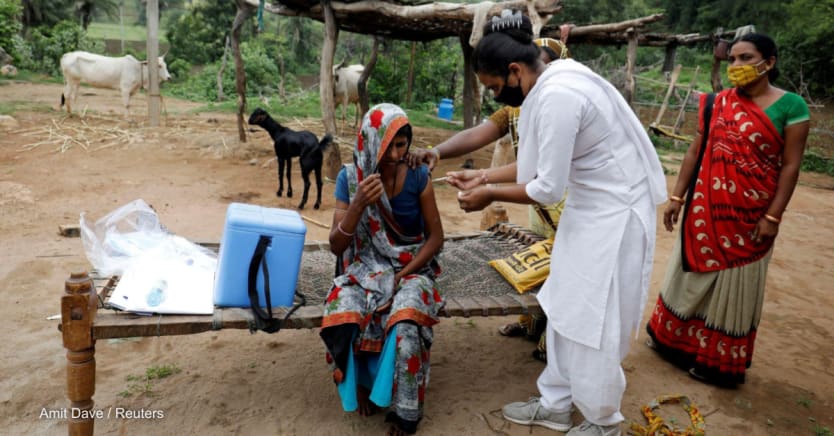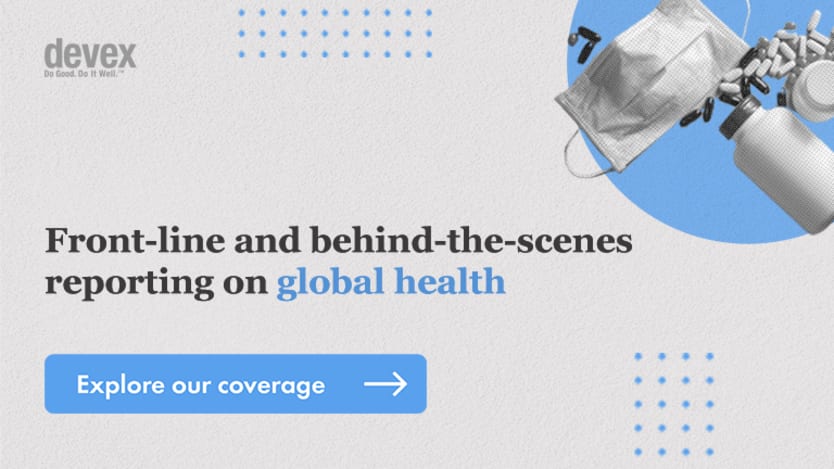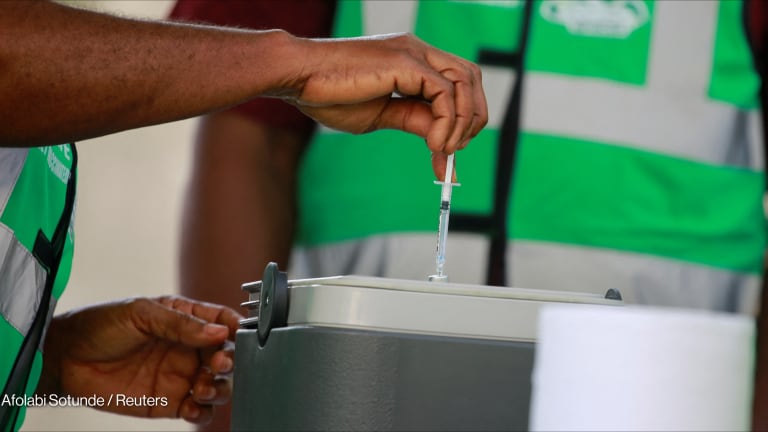
Gaurav Sharma, a 29-year-old social worker is among a team of young volunteers, who have been going from door to door in Ambala Cantonment, a town in the north Indian state of Haryana, trying to identify women who have not been vaccinated and convincing them to get it done.
Sharma is part of an initiative called the Delhi Youth Champions by the Centre for Social Research, a gender advocacy organization based in New Delhi, which has been trying to address the gender gap in the COVID-19 vaccination program.
The initiative has been operating for the last two months in the Indian capital and some areas in neighboring Haryana where the gender gap in vaccination has been pronounced. According to media reports over 300 shots were given to women against almost 500 shots for men per 1,000 shots in the state in early July.
But the gap is apparent in other parts of the country, too.
India has vaccinated 28 million more men than women so far. According to the CoWIN website — which tracks registration and the administering of vaccine doses — out of the 412.28 million people who have been vaccinated so far in the country, 220.24 million are men, and 191.96 million are women — the gender gap standing at 6.8%.
“Women do not make decisions about their health — they will always let husbands, brothers, or even sons take the call. … This same attitude has been responsible for the vaccination gap too.”
— Meera Satpathy, founder, Sukarya“It takes us many days to convince women to take the shot — but once one woman takes it, the other women of the community will follow, so we try and identify the one woman and persuade her,” says Sharma.
“The men go out and meet people and have a chance to get their doubts cleared, but the women stay within a close circle within their own community and misinformation spreads rapidly among them. There’s a lot of fear about vaccination affecting fertility and menstrual cycles.”
This is indicative of the existing gender gap in health care in India, which has always been stark and COVID-19 has just opened it up wide, said Ranjana Kumari, director of the Centre for Social Research based in New Delhi.
While it’s true that misinformation about vaccines affecting fertility or the menstrual cycles has led to vaccine hesitancy among women and girls in India — but in a country where women have very little decision-making powers or personal freedoms, the hesitancy is also sometimes forced, according to experts.
Decision-making
Indian women, especially in rural parts of the country, have been battling a slew of issues including the fact that they were not used to making definitive decisions about their own health care. Many were advised by their husbands not to get vaccinated because it might affect their child-bearing capabilities, according to Kumari.
Hundreds of studies confirm: Women hit hardest by COVID-19
An analysis by the Center for Global Development of over 400 studies conducted since the pandemic found that women in low- and middle-income countries have paid a disproportionately high price for the pandemic.
“Women do not make decisions about their health — they will always let husbands, brothers, or even sons take the call. It has been an unspoken practice in our society. This same attitude has been responsible for the vaccination gap too,” Meera Satpathy, founder of Sukarya, a nonprofit that works with women’s health in Haryana, told Devex.
In a bid to reverse age-old behaviors, Satpathy’s teams went from door to door and shared personal examples, through an initiative they named Fear Corona not Vaccination.
According to a survey conducted by the University of Maryland and the National Council of Applied Economic Research from 2011 to 2012, 79.8% of women needed permission to visit a health center. This shows little change since the survey conducted from 2004-2005, with 74.2% reported needing permission to visit a health center. Almost 80% of women said they had to seek permission from their husbands.
Women’s perspective of their own health, experts say, makes this even more complicated.
“Since childhood, they [women] are taught to stay quiet about their health — if they are ill, there’s always some home remedy for it. They are discouraged from seeking medical help because if they have to go to a doctor someone will have to take them. Many middle-class educated women, too, will hesitate to walk into a clinic alone,” said Kumari. “The other difficulty with vaccination is that the supply is not assured. Many women have gone to the center, couldn’t get the vaccine and didn't go back again.”
Sign up for Devex CheckUp
The must-read weekly newsletter for exclusive global health news and insider insights.
In a recent report, the World Health Organization stated that “understanding how gender roles, norms, and relations and gender inequality influence access to, and demand for, vaccines in different contexts is critical for expanding reach."
It had added that gender-related barriers "must be addressed in the planning and rollout of vaccine distribution to reach everyone, especially those most marginalised.”
The report also pointed out some areas where governments could directly intervene — including to address mobility and gender-based violence issues.
“Women, in general, are law-abiding and understand in general the safety needed for their family and children. They try to follow the mask mandate and other guidelines more seriously. I would recommend [a] door-to-door visit and free vaccination with a very nominal fee charged in peri-urban and rural areas,” Satpathy said.
A new approach
Other experts stress that the state will have to take responsibility for women’s vaccination - because their families won’t.
“Change the messaging around vaccination — don’t say get vaccinated, rather say get your whole family vaccinated,” Kumari said.
Rohini Pande, a United States-based economist, recently co-authored a report that had recommended: “a new approach is needed to reach the poor, particularly women.”
The paper had noted that this would involve “working with the whole range of front-line workers — which extends beyond health workers to include local government officials, leaders of women’s self-help groups, and health workers.”
“Working through multiple workers able to reach women — including Anganwadi [rural child care center], SHG [self-help group], panchayat leaders [elected village representatives] is important. Using traditional modes of information like T.V. could also help,” Pande told Devex.
But it is also important to ensure a steady supply of vaccines. “Increasing vaccine supply is key — at times of shortage, women are particularly likely to get left out,” Pande added.









